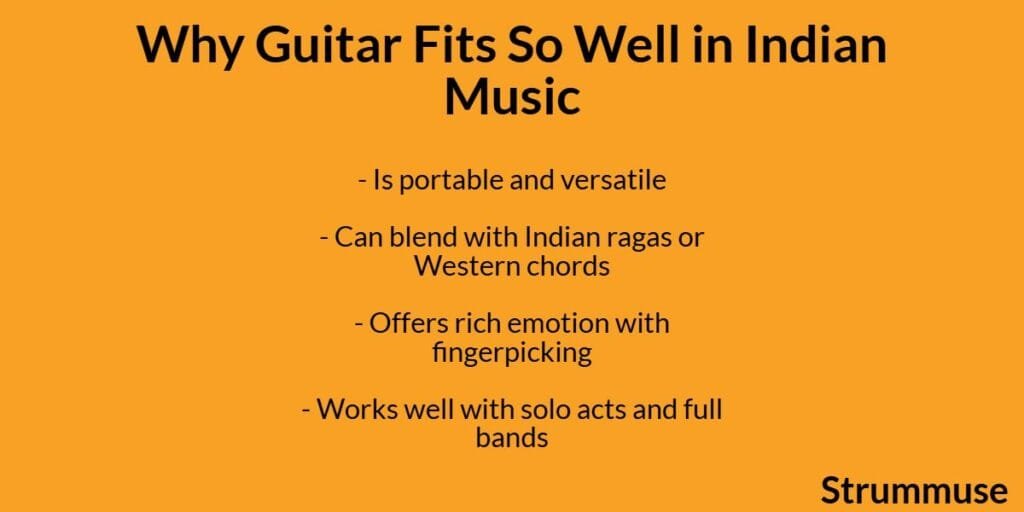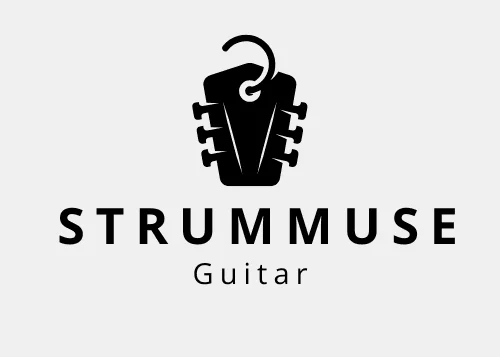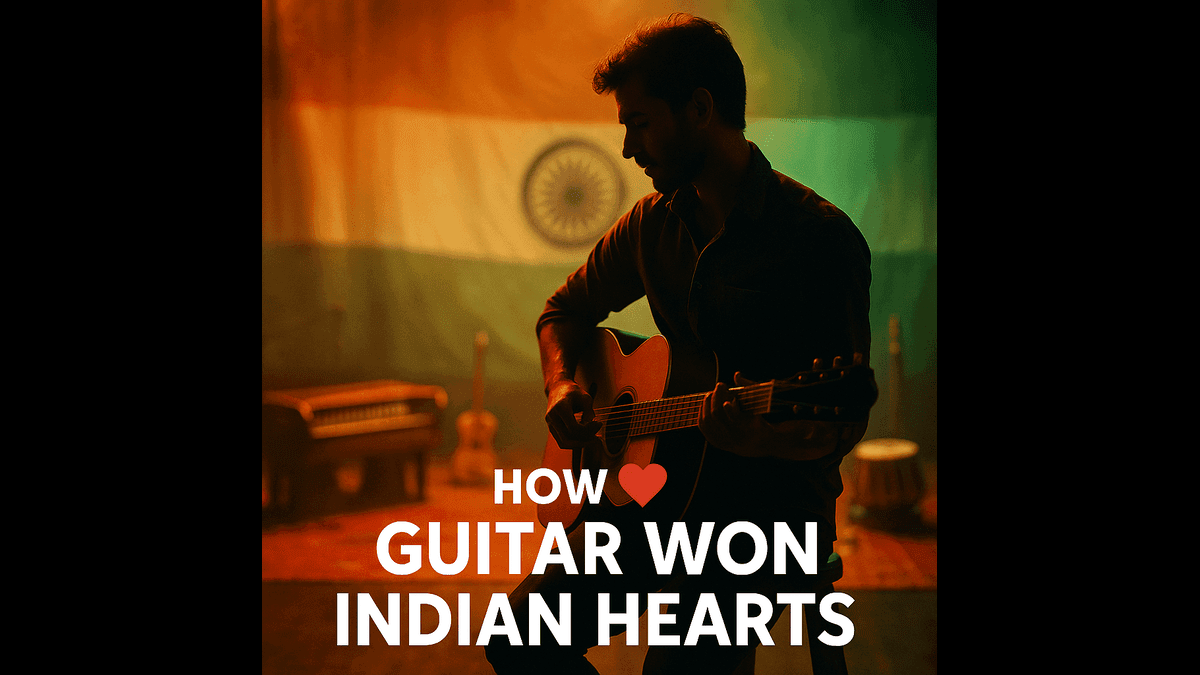Introduction
Once seen as a Western luxury, the guitar has now become an essential part of Indian music. Whether it’s romantic Bollywood ballads, heartfelt indie tunes, or raw YouTube covers — the guitar is everywhere. But how did this journey begin? How did a six-string instrument once confined to rock bands become the soul of Indian music?
In this post, we’ll explore the fascinating journey of the guitar in India, from foreign import to a heartfelt storyteller of millions. This insight isn’t just for musicians — it’s for every music lover who’s ever hummed a guitar tune in a Hindi song.
The Early Years – A Western Instrument Enters India
In the 1960s and 70s, Indian audiences were primarily exposed to the guitar through Western rock, jazz, and blues. Bands like The Beatles and The Rolling Stones had already made the guitar a global icon, and Indian musicians began taking note.
- R.D. Burman, one of Bollywood’s most legendary music directors, played a major role in introducing guitar-driven arrangements to Indian film music.
- His use of electric and acoustic guitars in songs like “Dum Maro Dum” or “Chura Liya Hai Tumne” was groundbreaking at the time.
At first, the guitar was seen as a cool, “modern” instrument — not deeply emotional or cultural. But all of that was about to change.
The 90s and Early 2000s – A Shift in Sound
By the 1990s, the guitar had found a comfortable spot in Bollywood music. Romantic songs began using soft acoustic guitar plucks to enhance the emotion. Songs like:
- “Pehla Nasha” (Jo Jeeta Wohi Sikandar)
- “Tera Chehra” (Adnan Sami)
- “Dil Chahta Hai” title track
These all used guitar not just as background, but as the musical voice of love, longing, and youth.
This era also saw the rise of music channels like MTV and Channel V in India. Young musicians, inspired by both Bollywood and Western bands, started picking up the guitar as their first instrument.
The Digital Revolution – Anyone Can Learn
With the rise of the internet in the late 2000s and 2010s, learning guitar became easier than ever.
- YouTube tutorials (in Hindi & English)
- Guitar chord blogs like StrumMuse
- Mobile apps like GuitarTuna and Ultimate Guitar
All these made it possible for anyone — from a college student in Delhi to a teenager in a small village — to learn guitar from home.
This accessibility changed the game.
Now, anyone could learn:
- Easy Hindi guitar songs for beginners
- Best Bollywood chords to play on acoustic
- Fingerpicking and strumming patterns
And they started creating their own music. That’s when the real shift began.
Indie Revolution – Guitar Becomes Desi
The 2010s gave birth to India’s Indie Music Movement, where artists started creating their own songs outside of Bollywood.
Artists like:
- Prateek Kuhad
- Anuv Jain
- When Chai Met Toast
- Osho Jain
All used simple acoustic guitar as the foundation of their sound.
These artists brought vulnerability, emotion, and simplicity back into the spotlight. Their songs were often built with just 3–4 chords, minimal production, and lyrics that connected with every young Indian.
The guitar became not just an instrument, but a storyteller.
Even regional artists started using guitar to blend folk and contemporary sounds, making it truly Indian in flavour.
Why Guitar Fits So Well in Indian Music

Unlike traditional instruments like sitar or tabla, guitar:
- Is portable and versatile
- Can blend with Indian ragas or Western chords
- Offers rich emotion with fingerpicking
- Works well with solo acts and full bands
Moreover, most Bollywood songs — especially romantic tracks — are structured in simple chord progressions, making them easy for beginners to learn.
Educational Boom – Guitars in Every Home
Today, almost every Indian city has local guitar academies. Schools host music clubs. Colleges have bands. And social media is full of reels featuring people singing “Tera Ban Jaunga” with a guitar in their lap.
This cultural change means:
- Guitars are no longer “Western” — they are part of India’s daily life.
- From Instagram covers to stage shows, the guitar is now mainstream.
- Most people learning music today start with the guitar — not harmonium or tabla.
Bonus Tips for Aspiring Guitarists in India
- Start with Hindi songs – These usually use common chords like Em, C, G, D, Am, and are easy to memorize.
- Use a capo to play complex songs with easier chord shapes.
- Practice daily for 20–30 minutes – Consistency matters more than speed.
- Record yourself – Watching your own progress helps correct mistakes.
- Join communities – Facebook groups, Reddit threads, or Discord servers for Indian guitar learners.
Also, explore beginner resources on our blog — like this popular guide:
10 Easy Hindi Guitar Songs for Beginners
FAQs – Guitar’s Role in Indian Music
Q. Why is guitar so popular among Indian youth?
Because it’s portable, easy to learn, and matches the emotional tone of Bollywood and indie music.
Q. Can I play Indian classical music on the guitar?
Yes, using fingerstyle techniques and alternative tunings, many ragas and classical melodies can be adapted.
Q. What makes guitar different from other Indian instruments?
It’s universal, doesn’t require additional setup like harmonium or tabla, and is great for both melody and rhythm.
Q. Which type of guitar is better for Hindi songs – acoustic or electric?
Acoustic is preferred for Bollywood and indie. Electric is used in rock fusion or live performances.
Final Thoughts
From the background of R.D. Burman’s tracks to the fingertips of a heartbroken teen writing their first song — the guitar has become a voice for India. It’s no longer just an instrument. It’s a diary, a companion, and a cultural bridge.
As Indian music continues to evolve, the guitar will remain its soulful heartbeat — one chord at a time.

